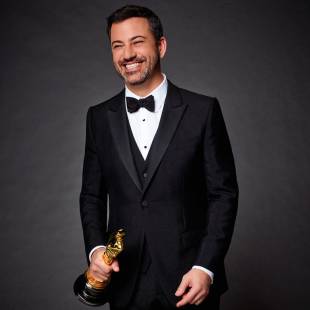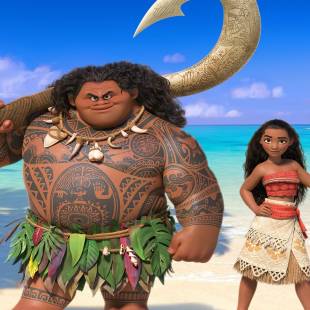Hidden Figures Parent Guide
This engaging underdog story provides an excellent opportunity to discuss issues of racial and gender prejudice -- and, if you're a space nerd, the competition between the US and Soviets too.
Parent Movie Review
In the early days of NASA, getting a man into space required something that wasn’t yet invented: A computer. The Americans could have waited for them for a couple more years, but with the Russians already ahead in the race with Sputnik and other experimental flights, the pressure was too intense.
In order to perform the necessary advanced calculations, the government agency hired human computers—specifically humans highly gifted in solving complex mathematical problems. But there simply weren’t enough skilled people, or at least among the white population, to fill the requirements. So, during a time when black integration was a controversial topic, and with their research lab located in Langley, Virginia (a hotbed of racial prejudice), NASA reluctantly recruited people of color to fill the positions. Even more notable, many of these arithmetic whizzes were not only black, they were women.
Hidden Figures shines the spotlight on three of these amazing women: Katherine Johnson (played by Taraji P. Henson) started high school at age 10 and had degrees in Mathematics and French by 18 years of age. Dorothy Vaughn (played by Octavia Spencer) graduated from college at 19, joined Langley in 1943, and went on to head the West Computing Group—the segregated black, female number-crunchers. Mary Jackson (played by Janelle Monáe) was a Virginia local with degrees in Mathematics and Physical Sciences, specializing in wind tunnel experiments and aircraft data. Yet for all their credentials, these women labored through countless calculations in an isolated basement office in a remote area of the campus. Notwithstanding, their efforts were instrumental in getting Alan Shepard into space and heralding the United States’ first successful human launch.
But Shepard’s 15-minute sub-orbital flight had been proceeded less than a month earlier by a more impressive 108-minute orbital voyage by Soviet cosmonaut Yuri Gagarin. To prove their ability to do likewise, the American’s focused on John Glenn’s mission for a multi-orbit flight that would last several hours. Stressed to find more resources, NASA supervisor Vivian Michael (a presumably fictitious character played by Kirsten Dunst) calls upon Vaughn to suggest candidates from the West Computing Group to fill vacant roles within white-only areas. Johnson is the first to be invited to join the Space Task Group, the domain of the top aeronautic engineers led by a demanding boss, Al Harrison (Kevin Costner).
Mary Jackson’s rise doesn’t come as quickly. To be considered for employment in her dream job, she is told she needs to take additional courses that are only offered during the evening at white high school. Getting permission to attend means she must first file a formal petition at the courthouse. Her long journey eventually lead to her become NASA’s first black female engineer.
But attitudes aren’t the only thing beginning to change in society. With the expected arrival of NASA’s first IBM machine, Dorothy Vaughan realizes the massive computer will render many human staff obsolete. Determined to stay relevant, Dorothy takes upon herself the challenge of learning how to program the beast, as well as the responsibility to pass this knowledge onto her team. Soon she and her cohorts have indispensable skills that bring them into the bright sterile realm of the electronic computer.
This story is artfully blended with irony that helps audiences understand the challenges of the times. For instance, Katherine must walk close to a mile to use the only restroom authorized for black employees. Jackson, wearing the kind of shoes mandatory in the women’s dress code, gets her heel stuck in a grate during a wind tunnel experiment. And Vaughan’s second-class status means she can’t enter the out-of-bounds computing room to test her programming skills unless she’s willing to sneak in. Even in their home community respect is hard to find, with men questioning both their abilities and career ambitions.
Gratefully, there are few reasons to not share this engaging underdog story with older children and teens. With just a handful of mild profanities, the script provides an excellent opportunity for parents to discuss issues of racial and gender prejudice. Set at the crossroads of black integration, Soviet vs US aggression and the early days of women in the workplace, Hidden Figures is a time capsule of personal fears, biases and hopes that just happen to collide within the NASA environment. For space nerds like myself, that just adds to the interest of this tale! This one small step for three black women is one large step for anyone who has faced discrimination.
Directed by Theodore Melfi. Starring Taraji P. Henson, Octavia Spencer, Janelle Monáe. Running time: 127 minutes. Theatrical release January 13, 2017. Updated April 14, 2020
Hidden Figures
Rating & Content Info
Why is Hidden Figures rated PG? Hidden Figures is rated PG by the MPAA for thematic elements and some language.
Violence: News footage of violence during the civil rights movement is shown. A character steals a book from the library. The potential dangers of space travel are discussed. Characters feel bullied, demeaned and discriminated against. Characters are treated unfairly and misjudged by authority figures and society.
Sexual Content: Characters embrace and kiss. Some flirtatious banter occurs.
Profanity: Profanities, slurs and terms of deity are infrequently used.
Alcohol / Drug Use: Women share some homemade alcohol and one gets a little tipsy. Drinking also occurs in social settings. Smoking is seen.
Page last updated April 14, 2020
Hidden Figures Parents' Guide
How has society’s perceptions of race and gender differences changed since the 1950s and 60s, the era in which this movie is set. Do you think there is still room for improvement in issues of prejudice? Have you ever felt discriminated against? If so, for what reason?
Loved this movie? Try these books…
The book that inspired the film is Hidden Figures by Margot Lee Shetterley, which is packed with details that aren’t in the film. (It's also available in versions for younger readers.) Another treatment of the women who powered the space race is Nathalia Holt’s Rise of the Rocket Girls. Did you know that 13 American women tried to become astronauts, only to be rejected in favor of male candidates? Learn more in Martha Ackmann’s The Mercury 13.
Women have a long history in science and “computers”. For more information, take a look at Dava Sobel’s The Glass Universe: How the Ladies of the Harvard Observatory Took the Measure of the Stars. To look more broadly at women’s scientific contributions, check out Women in Science: 50 Fearless Pioneers Who Changed the World, written and illustrated by Rachel Ignotofsky.
News About "Hidden Figures"
Learn more about the real Dorothy Vaughn, Mary Jackson, Katherine Johnson and Human Computer Project.
From the Studio: As the United States raced against Russia to put a man in space, NASA found untapped talent in a group of African-American female mathematicians that served as the brains behind one of the greatest operations in U.S. history. Based on the unbelievably true life stories of three of these women, known as "human computers", we follow these women as they quickly rose the ranks of NASA alongside many of history's greatest minds specifically tasked with calculating the momentous launch of astronaut John Glenn into orbit, and guaranteeing his safe return. Dorothy Vaughn, Mary Jackson, and Katherine Johnson crossed all gender, race, and professional lines while their brilliance and desire to dream big, beyond anything ever accomplished before by the human race, firmly cemented them in U.S. history as true American heroes. Written by 20th Century Fox
Home Video
The most recent home video release of Hidden Figures movie is April 11, 2017. Here are some details…
Related home video titles:
Octavia Spencer also stars in The Help.
Other movies that depict aspects of the space race between the US and Russia include The Dish and the documentary series When We Left Earth - The NASA Missions .
Apollo 11 is a documentary built from original NASA footage of the first moon landing. Another film depicting that first visit to our moon is First Man, which shows Neil Armstrong’s career leading up the historic landing. Apollo 13, starring Tom Hanks, tells the shocking true story of the Apollo 13 disaster, and the astronauts who ran into car trouble…halfway to the moon. October Sky, starring Jake Gyllenhaal, centers on the small West Virginia town of Coalwood, and a young boy named Homer Hickam who grows up there and dreams of rocketry.





